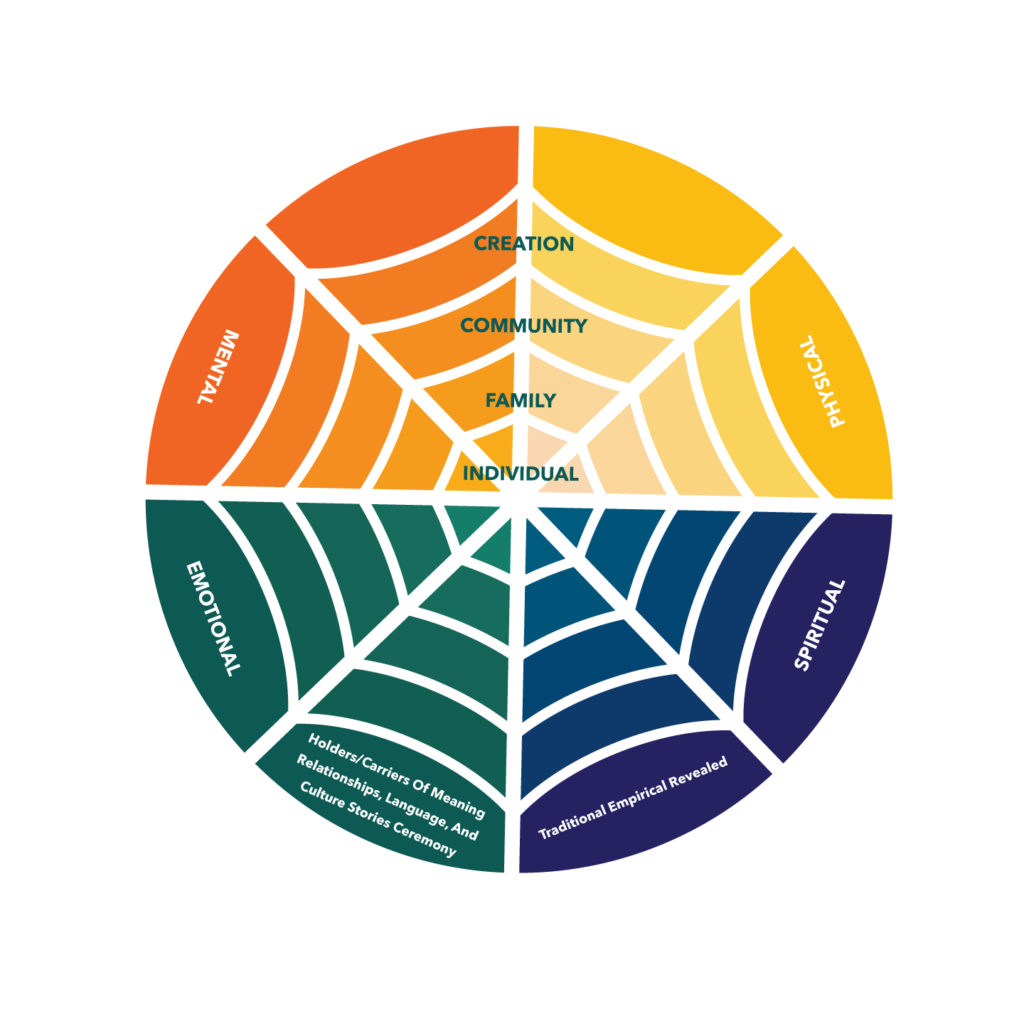Indigenous Health Model
As an Indigenous-led organization, the NB3 Foundation has always included Indigenous perspectives and approaches, but the full utilization of Indigenous perspective in evaluation was not fully incorporated until recently. In 2016, the NB3 Foundation’s Indigenous Health Model (IHM) was developed to reflect and guide NB3 Foundation’s programming, grant making, evaluation, research and capacity building strategies with Native communities[1]. Utilizing an Indigenous lens, the model builds on existing Indigenous evaluation models and metrics that align with NB3 Foundation’s mission and core values. One example is the American Indian Higher Education Consortium’s (AIHEC) five principles of Indigenous evaluation[2]:
1) Indigenous knowledge creation—Context and use is critical;
2) People of a place—Respect place-based programs;
3) Recognizing our gifts—Consider the whole person;
4) Centrality of community and family—Connect evaluation to community; and
5) Tribal sovereignty—Create ownership and build capacity.
These principles were woven into NB3 Foundation’s Indigenous Health Model (spider web) which symbolizes the interrelated and collective strength of multiple elements that reflect a holistic view of health and wellness[3]. Recognizing that when one part of the spider web is moved, the impact radiates across the entire web.
- Sturm, R.; Francis IV, L. (2016). Building an inclusive community-centered evaluation program. Responsive Evaluation.
- American Indian Higher Education Consortium Indigenous Evaluation Framework. https://portalcentral.aihec.org/Indigeval/Pages/default.aspx
- Notah Begay III Foundation. (2016). “Exploring Native Strong: First Two Years.” Santa Ana Pueblo, NM.
The IHM includes an ecological systems framework that considers the many personal and environmental factors that impact a person’s health. Additionally, the IHM blends this framework with the five principles of indigenous knowledge and worldviews by connecting to the place of the people, and the gifts and values that contribute to changes at the individual, family, and community level. Beginning with indigenous knowledge and worldviews, the IHM sets the context for how indigenous people conceptualize holistic health (physical, spiritual, emotional, and mental) based on their ancestral teachings, which includes the natural environment and creation. The model is reflective of how to be a good relative and the connection to all life forces: creation, people, plants, and animals. These foundational teachings are the facilitators for illustrating how success can be measured based on community driven indicators that include cultural teachings, roles, and protocols.








